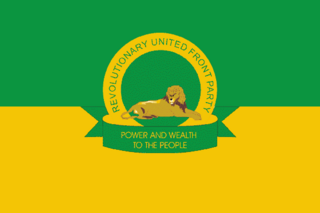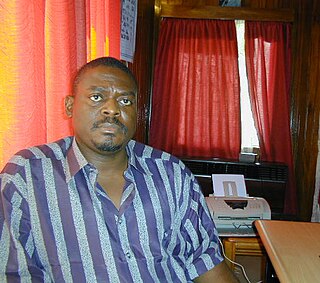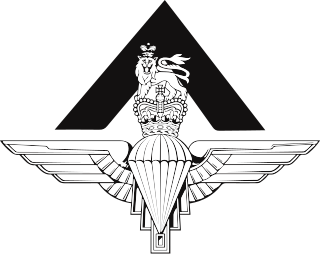Sierra Leone first became inhabited by indigenous African peoples at least 2,500 years ago. The Limba were the first tribe known to inhabit Sierra Leone. The dense tropical rainforest partially isolated the region from other West African cultures, and it became a refuge for peoples escaping violence and jihads. Sierra Leone was named by Portuguese explorer Pedro de Sintra, who mapped the region in 1462. The Freetown estuary provided a good natural harbour for ships to shelter and replenish drinking water, and gained more international attention as coastal and trans-Atlantic trade supplanted trans-Saharan trade.

Foday Saybana Sankoh was the founder of the Sierra Leone rebel group Revolutionary United Front (RUF), which was supported by Charles Taylor-led NPFL in the 11-year-long Sierra Leone Civil War, starting in 1991 and ending in 2002. An estimated 50,000 people were killed during the war, and over 500,000 people were displaced in neighboring countries.

The Revolutionary United Front (RUF) was a rebel group that fought a failed eleven-year war in Sierra Leone, beginning in 1991 and ending in 2002. It later transformed into a political party, which still exists today. The three most senior surviving leaders, Issa Sesay, Morris Kallon and Augustine Gbao, were convicted in February 2009 of war crimes and crimes against humanity.

Alhaji Ahmad Tejan Kabbah was a Sierra Leonean politician who served twice as the 3rd President of Sierra Leone, from 1996 to 1997 and again from 1998 to 2007. An economist and attorney by profession, Kabbah spent many years working for the United Nations Development Programme. He retired from the United Nations and returned to Sierra Leone in 1992.

Major Johnny Paul Koroma was a Sierra Leonean military officer who was the head of state of Sierra Leone from May 1997 to February 1998.
Valentine Esegragbo Melvine Strasser is a former Sierra Leonean military officer who served as head of state of Sierra Leone from 1992 to 1996. He became the world's youngest Head of State in 1992, seizing power three days after his 25th birthday.

Major General Joseph Saidu Momoh, OOR, OBE was a Sierra Leonean politician and military officer who served as the second President of Sierra Leone from November 1985 to 29 April 1992.

The United Nations Mission in Sierra Leone (UNAMSIL) was a United Nations peacekeeping operation in Sierra Leone from 1999 to 2006. It was created by the United Nations Security Council in October 1999 to help with the implementation of the Lomé Peace Accord, an agreement intended to end the Sierra Leonean civil war. UNAMSIL expanded in size several times in 2000 and 2001. It concluded its mandate at the end of 2005, the Security Council having declared that its mission was complete.

Operation Barras was a British Army operation that took place in Sierra Leone on 10 September 2000, during the late stages of the nation's civil war. The operation aimed to release five British soldiers of the Royal Irish Regiment and their Sierra Leone Army (SLA) liaison officer, who were being held by a militia group known as the "West Side Boys". The soldiers were part of a patrol that was returning from a visit to Jordanian peacekeepers attached to the United Nations Mission in Sierra Leone (UNAMSIL) at Masiaka on 25 August 2000 when they turned off the main road and down a track towards the village of Magbeni. There the patrol of twelve men was overwhelmed by a large number of heavily armed rebels, taken prisoner, and transported to Gberi Bana on the opposite side of Rokel Creek.
The Armed Forces Revolutionary Council (AFRC) was a group of Sierra Leone soldiers that allied itself with the rebel Revolutionary United Front in the late 1990s. While the AFRC briefly controlled the country in 1998, it was driven from the capital by an international military intervention of the Economic Community of West African States Monitoring Group (ECOMOG). It was no longer a coherent and effective organization by the elections of 2002.

The Pathfinder Platoon is a pathfinder unit of the British Army, and an integral part of 16 Air Assault Brigade. The Pathfinder Platoon acts as the brigade's advance force and reconnaissance force. Its role includes locating and marking drop zones and helicopter landing zones for air landing operations. Once the main force has landed, the platoon provides tactical intelligence and offensive action roles for the brigade.
The Sierra Leone Civil War (1991–2002), or the Sierra Leonean Civil War, was a civil war in Sierra Leone that began on 23 March 1991 when the Revolutionary United Front (RUF), with support from the special forces of Liberian dictator Charles Taylor's National Patriotic Front of Liberia (NPFL), intervened in Sierra Leone in an attempt to overthrow the Joseph Momoh government. The resulting civil war lasted 11 years, enveloping the country. It left over 50,000 dead.
Samuel Hinga Norman was a Sierra Leonean politician from the Mende tribe. He was the founder and leader of the Civil Defence Forces, commonly known as the Kamajors. The Kamajors supported the government of Ahmed Tejan Kabbah against the Revolutionary United Front(RUF), which was led by Foday Sankoh. On 7 March 2003 Hinga Norman was indicted by the Special Court for Sierra Leone for war crimes and crimes against humanity. He died on 22 February 2007 in Dakar, Senegal while undergoing medical treatment.
The Kamajors were a group of traditional hunters from the Mende ethnic group in the south and east of Sierra Leone. The word "Kamajor" derived from Mende "kama soh", meaning traditional hunter with mystical powers, who were originally employed by local chiefs.
The Lomé Peace Agreement was a peace agreement signed on 7 July 1999 between the warring parties in the civil war that gripped Sierra Leone for almost a decade. President Ahmad Tejan Kabbah signed with the Revolutionary United Front (RUF) leader, Foday Sankoh and granted Sankoh a position in the transitional government as well as amnesty for him and all combatants. The accord is named for Lomé, the capital of Togo, where the negotiations took place and the agreement was signed.
Samuel Sam Bockarie, widely known as Mosquito, was a Sierra Leonean politician and army commander who served as a leader of the Revolutionary United Front (RUF). Bockarie was infamous during the Sierra Leone Civil War for his brutal tactics, which included amputation, mutilation, and rape. He earned the nickname "Mosquito" for his ability to attack when his enemies were off-guard, mainly during the night. During his service in the RUF, he befriended future Liberian president Charles Taylor, and RUF commander Foday Sankoh. When Sankoh was imprisoned from March 1997 until April 1999, Bockarie served as commander of the RUF in his place.
Alimamy Pallo Bangura is a politician in Sierra Leone. Over the past 12 years, Bangura has played a major role in Sierra Leonean politics and was a member of the Revolutionary United Front Party, where he replaced rebel leader Foday Sankoh following Sankoh's May 2000 arrest and 2002 electoral disqualification. His posts have included: Ambassador to the United Nations from Sierra Leone (1994–1996); Foreign Minister (1997–1998); Minister of Energy and Power (1999–2001); and Secretary General of the Revolutionary United Front Party (2002–2007). He also ran for president in 2002 alongside former cabinet minister Peter Vandy, but the pair only received 1.7% of the presidential vote, while the RUF received only 2.2% of the parliamentary vote.
The United Kingdom began a military intervention in Sierra Leone on 7 May 2000 under the codename Operation Palliser. Although small numbers of British personnel had been deployed previously, Palliser was the first large-scale intervention by British forces in the Sierra Leone Civil War. In early May 2000, the Revolutionary United Front (RUF)—one of the main parties to the civil war—advanced on the country's capital, Freetown, prompting the British government to dispatch an "Operational Reconnaissance and Liaison Team" (ORLT) to prepare to evacuate foreign citizens. On 6 May, the RUF blocked the road connecting Freetown to the country's main airport, Lungi. The next day, British soldiers began to secure the airport and other areas essential to an evacuation. The majority of those who wished to leave were evacuated within the first two days of the operation, but many chose to stay following the arrival of British forces.
David Alan Jones is a retired British diplomat who was High Commissioner to Sierra Leone during the British military intervention in the Sierra Leone Civil War.







